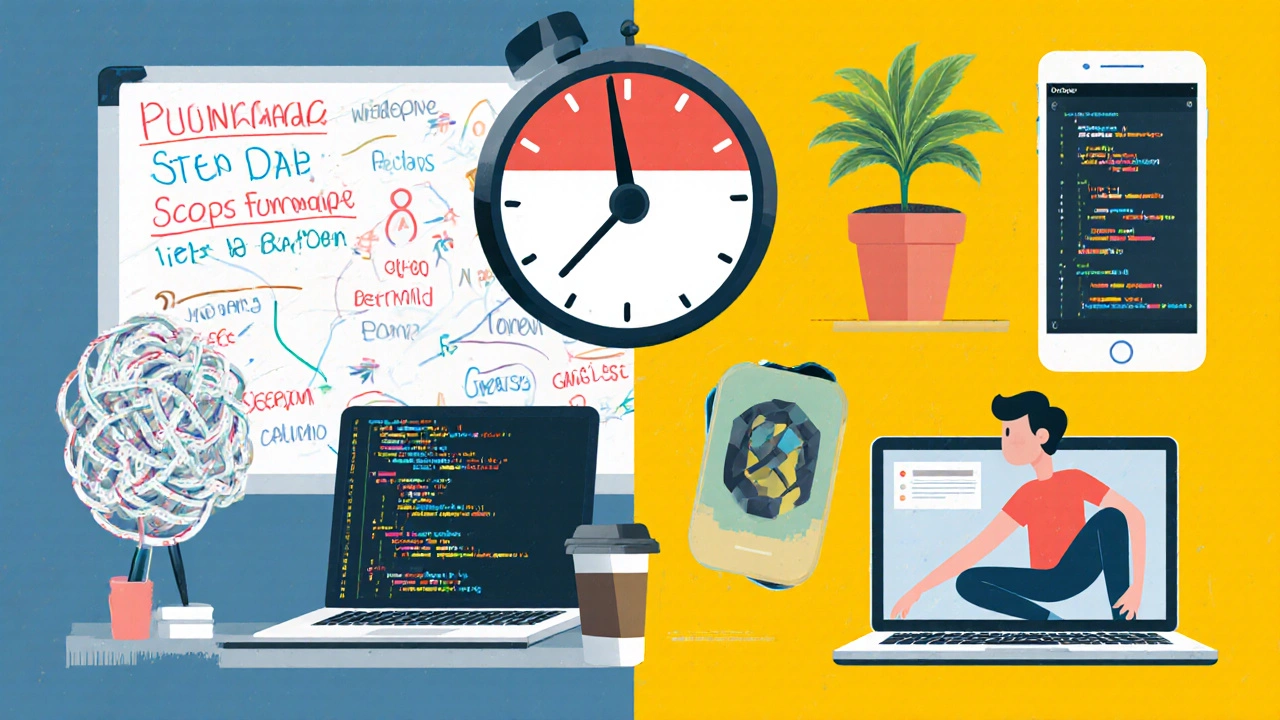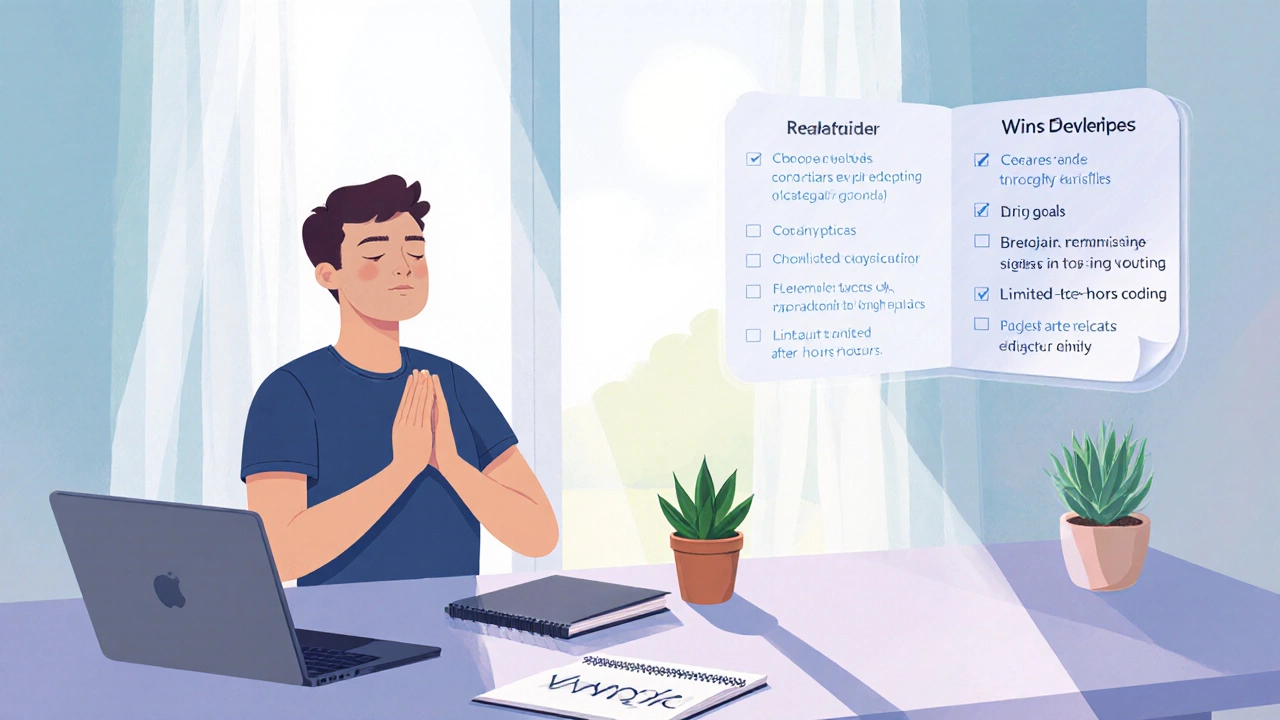Ever wonder if the myth of the "rock‑star coder" hides a hidden pressure cooker? Software developer is a professional who writes, tests, and maintains computer code, and like any high‑skill role, the job can turn stressful fast.
Why stress shows up in coding jobs
First, the pace of change in tech is relentless. New frameworks appear every few months, and companies expect developers to keep up. That constant learning curve fuels coding stress because you’re always on the edge of feeling outdated.
Second, code isn’t just lines on a screen-it’s the backbone of services that keep businesses running. A single bug can cause downtime, revenue loss, or even safety issues. The fear of that impact spikes anxiety during debugging sessions.
Third, many developers work remotely or across time zones. While flexibility sounds great, it often blurs the line between work and personal life, leading to longer hours and reduced recovery time.
Typical stressors broken down
- Unrealistic deadlines: Sprint goals set without buffer.
- Scope creep: Features keep piling up mid‑project.
- On‑call rotations: Night‑time alerts that interrupt sleep.
- Impostor syndrome: Feeling you don’t belong despite evidence.
- Team dynamics: Miscommunication in Agile ceremonies.
How coding classes can amplify or ease stress
Enrolling in a coding bootcamp or an online class can be a double‑edged sword. On one hand, structured learning gives you a roadmap, a community, and a mentor-buffers against feeling lost. On the other hand, intense bootcamps often compress months of material into weeks, raising pressure to absorb everything quickly.
Choose a program that balances theory with hands‑on projects, offers mental‑health check‑ins, and provides realistic job‑placement timelines. Those small perks can tip the scale from burnout to sustainable growth.

Spotting the signs early
If you notice any of these, it might be time to pause:
- Constant fatigue and trouble sleeping after coding sessions.
- Loss of enthusiasm for personal projects you once loved.
- Isolation-preferring to work alone even when collaboration is needed.
- Physical symptoms like headaches, eye strain, or lingering neck pain.
- Frequent errors that you’d normally catch on the first pass.
These cues often signal the early stages of burnout, a chronic form of work‑related stress that can derail a career if left unchecked.
Practical ways to lower stress while coding
Below is a quick‑reference table that matches common stress factors with easy‑to‑implement countermeasures.
| Stress Factor | Typical Impact | Mitigation Strategy |
|---|---|---|
| Deadline pressure | Rushed code, more bugs | Break tasks into micro‑milestones; use time‑boxing. |
| On‑call alerts | Interrupted sleep, anxiety | Rotate on‑call fairly; set alert thresholds; use escalation scripts. |
| Remote isolation | Loneliness, miscommunication | Schedule regular video stand‑ups; join developer communities. |
| Continuous learning overload | Feeling behind, mental fatigue | Allocate 30 minutes a week for new tech; stick to a curated learning path. |
| Impostor syndrome | Self‑doubt, avoidance | Keep a “wins” journal; pair‑program with a senior. |
Tools and habits that help maintain mental health
1. Pomodoro timer: 25‑minute focus bursts followed by short breaks keep brain fatigue low.
2. Version control hygiene: Frequent commits and clear messages reduce fear of losing work.
3. Static analysis tools (e.g., ESLint, SonarQube): Automate error checking, freeing mental bandwidth.
4. Physical movement: Stretch every hour, walk during code reviews, use a standing desk.
5. Mindfulness apps: A 5‑minute breathing session before a debugging marathon can lower cortisol spikes.

When to seek professional help
If stress starts affecting daily life-persistent sadness, panic attacks, or thoughts of quitting-consider talking to a therapist who specializes in tech‑related anxiety. Many companies now offer Employee Assistance Programs (EAP) that cover mental‑health counseling at no extra cost.
Quick checklist for a healthier coding routine
- Set clear daily goals; review them each morning.
- Take a 5‑minute break every hour; move around.
- Limit after‑hours coding to no more than two evenings a week.
- Document what you learned after each project; celebrate wins.
- Connect with peers-online forums, local meetups, or hackathons.
Frequently Asked Questions
Is stress unique to developers compared to other professions?
Every knowledge‑based job carries mental load, but developers often face rapid tech turnover, on‑call duties, and high visibility of bugs, which can amplify stress levels.
Can a coding bootcamp increase my stress?
Intensive bootcamps compress months of learning into weeks, so they can spike stress if you don’t have a solid support system. Look for programs that pace content and provide mental‑health resources.
How does remote work affect developer stress?
Remote setups blur work‑life boundaries, leading to longer hours and isolation. Setting strict work windows, using video check‑ins, and having a dedicated workspace helps.
What are early signs of burnout for a developer?
Persistent fatigue, loss of interest in coding, frequent mistakes, physical aches, and social withdrawal are typical early indicators.
Are there specific tools that reduce coding stress?
Yes-Pomodoro timers for focus, static analysis linters for error catching, and version‑control best practices all lower mental load.
